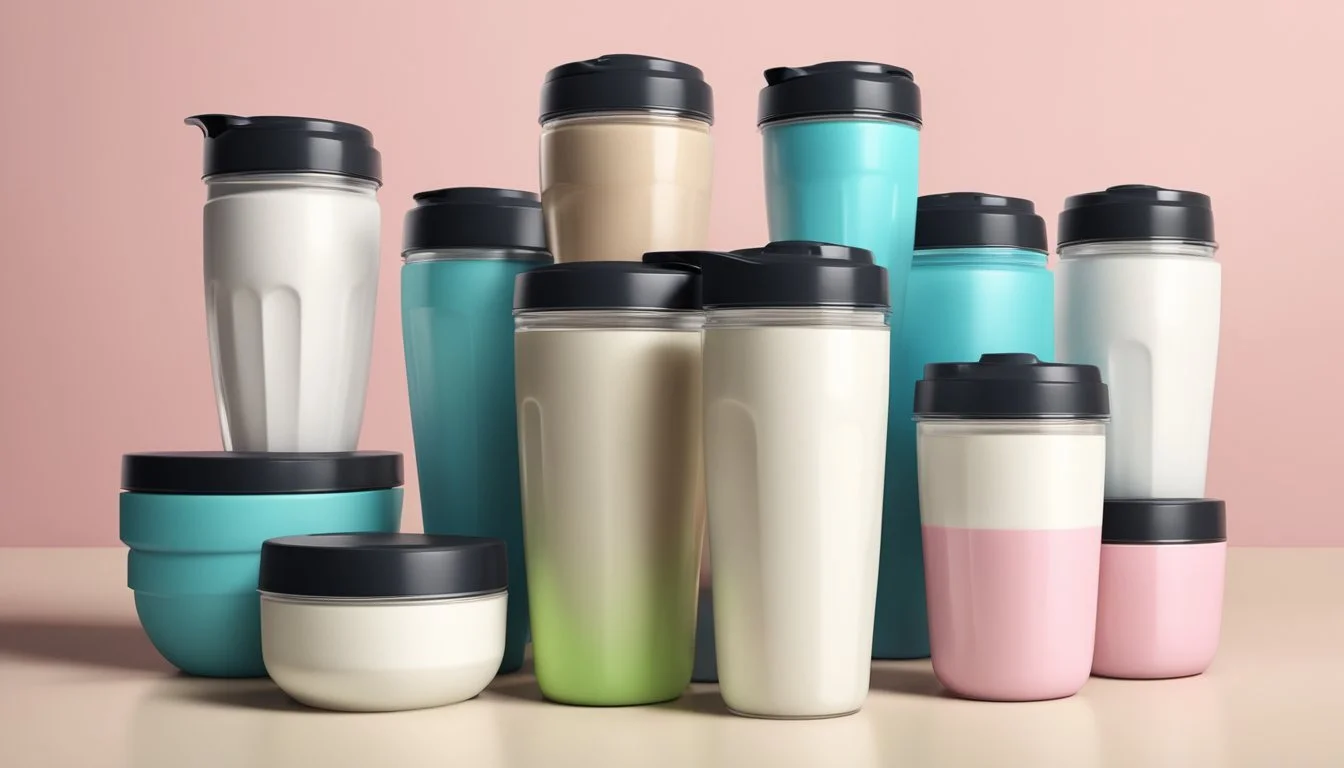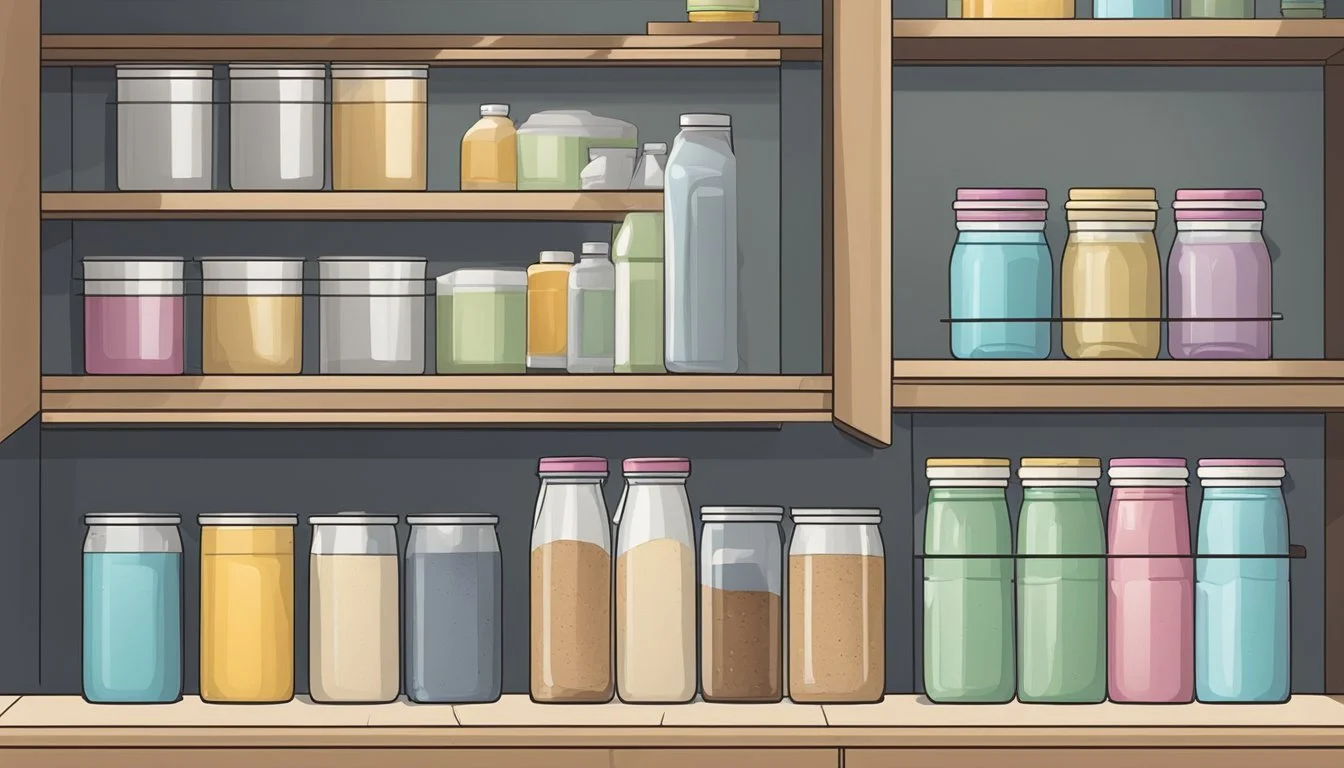Do Meal Replacement Shakes Expire?
Understanding Shelf Life and Safety
Are meal replacement shakes just another item that clutters the pantry, or do they carry an expiration date that truly matters? If you're an on-the-go individual relying on these convenient nutrition options, you might have pondered this question. Yes, meal replacement shakes do expire, and consuming them past their expiration date can pose risks to both taste and safety.
Meal replacement shakes provide a balanced mix of essential nutrients, making them a popular choice for those seeking a quick and efficient meal option. Trusting that your shake is within its expiry range is crucial to ensure you're getting its full nutritional benefits without unwanted gastrointestinal issues.
Beyond the nutritional value, there's also the question of taste. Over time, even the most well-formulated shake can lose its appeal, turning what should be a delightful sip into an unpalatable chore. A shake that's past its prime can lead to less than optimal dining experiences, urging one to reconsider if it’s worth the risk for a bit of added convenience.
Understanding Meal Replacement Shakes
Meal replacement shakes are designed to provide balanced nutrition in a convenient form. They typically include a mix of protein, fats, carbohydrates, vitamins, and minerals.
Components and Nutrition
Meal replacement shakes aim to mimic the nutritional profile of a balanced meal. They usually contain:
Protein: Key for muscle maintenance and repair. Common sources include whey protein, casein protein, and plant-based proteins like pea, rice, or soy.
Carbohydrates: Provide energy. Carbohydrates may come from maltodextrin, oat flour, or other sources.
Fats: Important for cell structure and energy. They might include healthy fats from sources like MCT oil or flaxseed oil.
Vitamins and Minerals: Essential nutrients are added to cover daily requirements.
Fiber: Helps digestion and keeps you full. Soluble and insoluble fibers are often included.
Added Sugar: Limited to keep calorie counts reasonable and avoid insulin spikes.
Shakes vary widely in their calorie content, ranging from 150 to 400 calories per serving. Quality is crucial, so look for shakes with natural ingredients and minimal preservatives.
Variety of Protein Sources
Different protein sources define the quality and purpose of meal replacement shakes.
Whey Protein: A fast-digesting, complete protein, ideal for post-workout recovery.
Casein Protein: A slow-digesting protein that provides a longer release of amino acids, suitable for sustained energy.
Plant-Based Proteins: Options like pea, rice, and soy protein powders cater to vegetarians and those with dairy intolerance.
Egg White Protein: Another complete protein source, often used for those avoiding dairy and soy.
Each protein type has its own benefits and drawbacks, so it's important to choose based on individual dietary needs and health goals. Consumers should consider potential allergens and digestive effects when selecting a protein source.
Shelf Life and Expiration
Meal replacement shakes have a specific shelf life that can be influenced by multiple factors. Understanding these factors can help ensure the shakes are consumed safely and at their best quality.
Factors Affecting Shelf Life
The shelf life of meal replacement shakes varies depending on several elements. Storage conditions play a critical role; keeping shakes in a cool, dry place can extend their usable period. Exposure to heat, humidity, and moisture can deteriorate the product more quickly.
Packaging also influences shelf life. Shakes in airtight containers generally last longer due to reduced oxidation. Products with preservatives may enjoy extended shelf lives. It is highly recommended to follow specific storage guidelines provided by the manufacturer for optimal results.
Interpreting Expiration Dates
The expiration date on meal replacement shakes indicates the period they maintain their potency, quality, and safety. After this date, the shake might still be safe to consume but could taste different and may not provide the same nutrition.
Some shakes include "sell-by" or "use-by" dates. These terms should be taken seriously to avoid any potential risks associated with expired products. Manufacturers provide these dates based on rigorous food safety guidelines to ensure consumer well-being. It is always best to err on the side of caution and avoid using products past their designated time frame.
Signs of Degradation
Meal replacement shakes, like many other consumables, show clear signs of degradation when they start to lose their quality. This degradation can be identified through changes in visual and textural properties, as well as through noticeable alterations in odor and flavor.
Visual and Textural Changes
A common indicator of degradation in meal replacement shakes is changes in color. Fresh shakes generally maintain a consistent color, while expired or compromised shakes may appear darker or exhibit unusual color spots. Clumping is another visual sign to look for. Fine powders that once flowed smoothly might develop clumps, indicating moisture exposure or chemical breakdown.
The texture of the shake can also shift. When mixed with liquid, a degraded shake might form lumps or have a gritty consistency, undermining the smooth experience expected from a fresh product. An excessive buildup at the bottom of the shaker could also signal degradation.
Odor and Flavor Deterioration
Odor plays a significant role in detecting the quality of a meal replacement shake. An expired shake often emits a rancid or sour smell, as opposed to the pleasant scent it initially had. This change usually stems from the breakdown of fats and other ingredients over time.
Flavor is equally telling. Degraded shakes often lose their intended taste and might develop an off flavor. They could taste stale, metallic, or unusually bitter. If the flavor profile is noticeably different from when the shake was fresh, it is a strong sign of degradation. Sampling a small amount to test for unusualness in the flavor is usually enough to identify issues.
Health and Safety Considerations
When it comes to meal replacement shakes, understanding the health and safety implications of consuming them, especially post-expiry, is essential. This section delves into the risks involved and expert recommendations to ensure safety and optimal nutrition.
Risks of Consuming Expired Shakes
Consuming expired meal replacement shakes can lead to multiple health issues. Over time, the nutritional value of these shakes diminishes, impacting protein intake and other vital nutrients. Consuming shakes past their expiration date can result in digestive issues or food poisoning due to bacterial growth and contamination.
Expired shakes may become unstable, causing changes in taste and texture, which could indicate compromised safety. Bacteria such as E. coli or Salmonella may grow in improperly stored or expired shakes, posing serious health risks. Symptoms of foodborne illness can range from mild stomach aches to severe digestive issues requiring medical attention.
To avoid these risks, it's crucial to always check the expiration date and observe any changes in color, smell, or consistency. Storing shakes according to the manufacturer's guidelines can also help maintain their safety.
Recommendations from Experts
Registered dietitians emphasize that meal replacement shakes should complement a balanced diet and not be the sole source of nutrition. Experts like those from the Mayo Clinic suggest consuming whole foods, especially fruits and vegetables, alongside these shakes for a more comprehensive nutrient intake.
When selecting a meal replacement shake, ensure it contains a balanced mix of protein, carbohydrates, fats, and fiber. Look for products with clear labeling of expiration dates and storage instructions. Trustworthy brands usually provide detailed nutritional information and adhere to safety standards to minimize the risk of contamination.
Additionally, storing shakes in cool, dry places and avoiding exposure to direct sunlight can help prolong their shelf life and preserve their nutritional quality. Following these expert tips can help you safely incorporate meal replacement shakes into your diet.
Optimizing Shake Consumption
To optimize the benefits of meal replacement shakes, focus on proper storage practices and incorporating them into a balanced diet. These steps will ensure maximum nutrient retention and effectiveness.
Proper Storage Practices
Meal replacement shakes need to be stored correctly to maintain their quality and nutritional value. Store in a cool, dry place, such as a pantry or refrigerator. Keeping protein shakes in a refrigerator at 40 degrees Fahrenheit (4 degrees Celsius) or colder helps prolong their freshness.
If homemade, these shakes should be consumed within 72 hours to avoid spoilage. Store-bought shakes, depending on the ingredients and packaging, can last longer but should still be refrigerated once opened. Always use airtight containers to prevent contamination and nutrient degradation.
Incorporating Shakes into a Balanced Diet
Incorporating meal replacement shakes into a balanced diet involves more than just convenience. Aim to balance macronutrient intake by pairing shakes with whole foods. For athletes or those looking to build muscle, supplement shakes with additional protein sources like beans, nuts, or lean meats.
Both men and women can benefit from these shakes as part of a diet that includes adequate protein intake and other essential nutrients. Avoid relying solely on shakes; instead, use them to complement meals. This approach ensures you get a variety of nutrients necessary for overall health.
Making Informed Choices
When selecting meal replacement shakes, it's crucial to focus on quality and alignment with dietary needs to ensure you're getting the best nutritional benefits and avoiding potential pitfalls.
Selecting Quality Shakes
Choosing a high-quality meal replacement shake involves examining the ingredients and nutritional content. Look for shakes that have between 20 to 25 grams of clean protein, ideally from organic protein powder.
It's also essential to check for healthy monounsaturated or saturated fats (approx. 10 to 15 grams), as well as fiber (6 to 8 grams). Avoid shakes with excessive additives or sugars. Nutrients like vitamins, minerals, and probiotics can add to the shake’s overall value.
Both men and women, especially athletes who aim to recover and build muscle, should ensure the shake supports their fitness goals.
Understanding Dietary Needs
Meal replacement shakes should align with an individual's specific dietary needs. Protein intake requirements can vary widely. For instance, athletes may need more protein to aid in recovery and muscle growth than the general population.
Men might require higher protein content depending on their fitness goals compared to women. It's also useful to consider any food allergies or intolerances when assessing shakes.
For those looking to enhance their overall nutrition, incorporating shakes with additional whole foods like vegetables can be beneficial. Consider shakes that are low in sugar and cholesterol to support overall health.
Understanding these nuances helps in making choices that best fit one's dietary and nutritional goals.
Conclusion
Meal replacement shakes indeed have expiration dates, which are essential for ensuring safety and maintaining nutritional quality. Consuming shakes past their expiry date can lead to decreased nutritional value and potential health risks.
Shelf life varies by type and storage conditions. Homemade shakes should be consumed quickly—within 72 hours if refrigerated, and within 2 hours if kept at room temperature. Store-bought shakes tend to last longer but should be stored in a cool, dry place.
Proper storage plays a significant role in prolonging the quality of meal replacement shakes. Keep them away from heat and light to prevent spoilage. Always check the packaging for specific storage instructions.
In summary, always prioritize safety by adhering to expiration dates and proper storage practices to ensure you get the best nutritional benefits from your meal replacement shakes.






